The Best Small Upright Freezer is not just about extra storage. It is about convenience, organization, and making everyday life easier. A compact freezer can save you more trouble than you might think. It gives you space to store bulk groceries, frozen meals, and your favorite snacks without overcrowding your main refrigerator. I use mine to keep desserts safe from snack lovers, store extra meat for busy weeks, and hide some ice cream that I do not plan to share. If you have limited kitchen space but still want a dedicated place for frozen essentials, a small upright model is a smart choice. It fits perfectly in apartments, offices, dorm rooms, or even garages without taking up too much space. What I love most is how simple it makes organization. You no longer need to dig through a deep chest freezer to find a pack of frozen vegetables. Everything is visible and easy to reach. Once you experience that level of convenience, you will wonder how you ever managed without one.
For a detailed guide to finding the right model for your home, check out this list of the Best Small Freezers for Home.
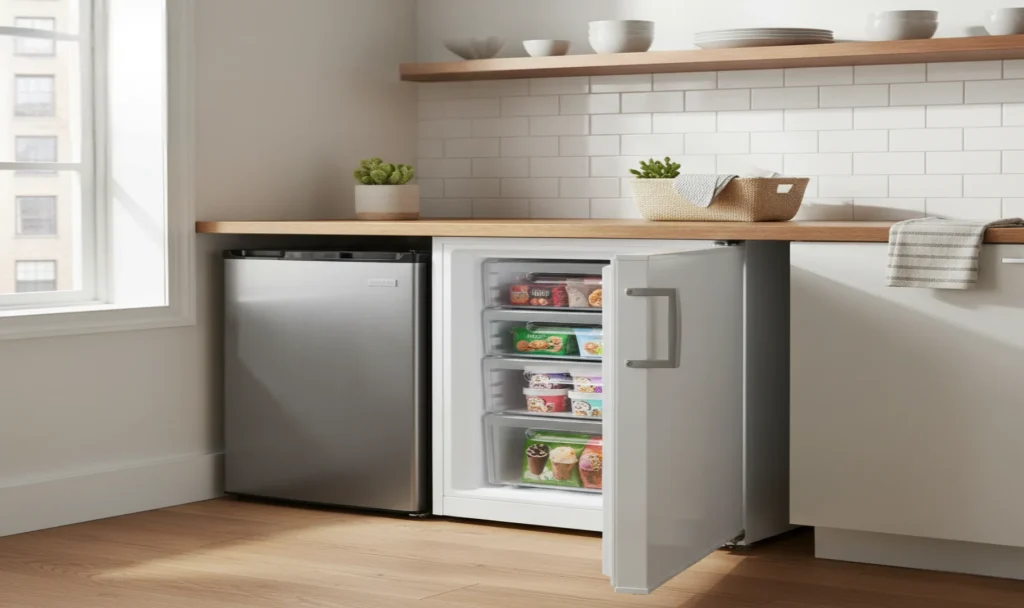
Why I Love Compact Freezers
A small space doesn’t mean sacrificing convenience. I’ve used one in my apartment, moved it to my office later, and it still works perfectly. The best part? I don’t have to dig into a chest model just to grab one pack of frozen peas. Everything is right in front of me.
They’re perfect for:
- People who don’t stockpile months of food but still want some extra storage.
- Keeping ice cream, breast milk, or beverages separate from the main refrigerator compartment.
- Apartments, dorms, and even RVs where every inch of space matters.
- Offices where employees bring lunch or snacks and need a shared frozen space.
Quick Comparison Table
| Model | Capacity | Noise Level | Key Features |
| Whynter CUF-301SS | 3 cu. ft. | 42 dB | R600a compressor, removable shelves, lockable door |
| hOmelabs Upright Freezer | 3 cu. ft. | 42 dB | 7 temperature settings, magnetic door seal, child lock |
| Kismile Compact Freezer | 3 cu. ft. | < 40 dB | Adjustable temp control, reversible door, affordable |
My Top 3 Picks
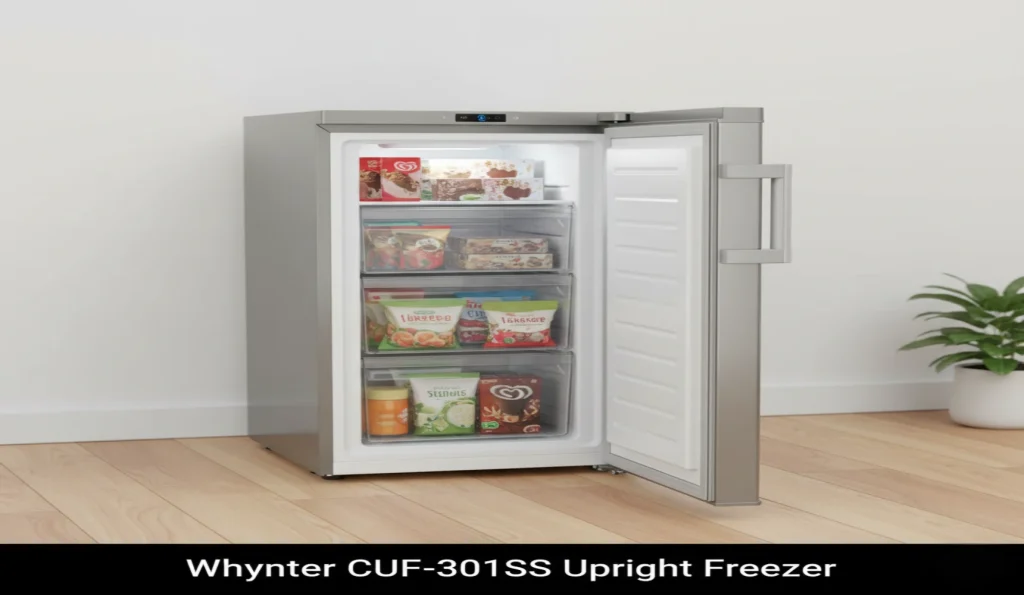
-
Whynter CUF-301SS Upright Freezer (Editor’s Choice)
This little appliance may be compact, but it freezes like a champ. It comes with adjustable shelves and a pull-out basket — a lifesaver for staying organized. I can remove the shelves when I need to store something tall. The stainless-steel finish looks sharp in any room and is easy to clean.
-
Key Features: Adjustable temperature (-10 to 10.4 °F), reversible door, 42 dB quiet operation.
-
Pros: Energy-efficient, secure lock, flexible storage.
-
Cons: Needs space on all sides since it’s freestanding.
I personally like the safety lock. It’s not just about kids — it also stops curious coworkers from swiping my frozen pizza.
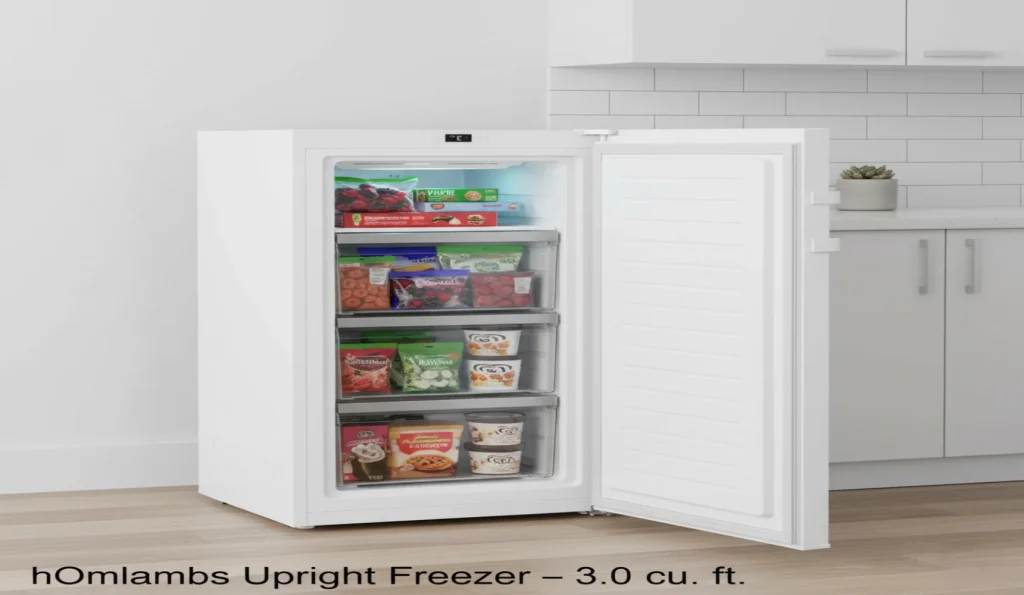
-
hOmelabs Upright Freezer – 3.0 cu. ft.
I like this one because of its simple dial thermostat and quick cooling. The magnetic seal is strong enough to keep kids from leaving the door open, which can save you from wasting electricity.
-
Key Features: Seven temperature levels, low annual energy use (270 kWh), reversible door.
-
Pros: Quiet, child lock, fits nicely on countertops.
-
Cons: Shelves are fixed.
I recommend this model for offices or shared apartments — it’s easy to use and requires very little attention.
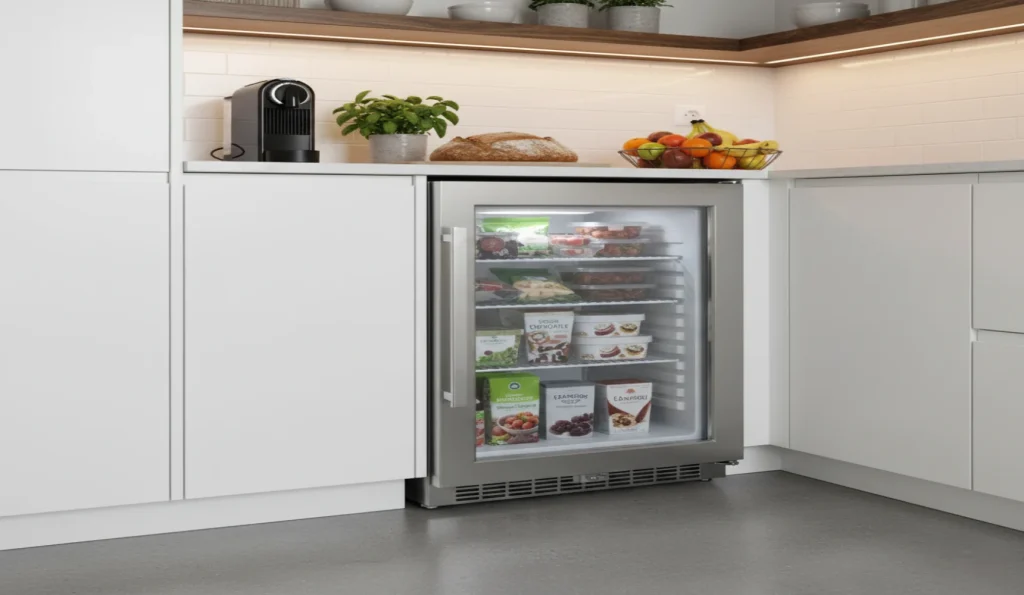
-
Kismile 3.0 cu. ft. Compact Upright Freezer
If you want an affordable option that doesn’t look cheap, this one’s a good pick. The brushed stainless finish looks modern, and it runs quieter than my laptop fan.
-
Key Features: Adjustable temperature range (6.8 °F to -7.6 °F), removable glass shelves.
-
Pros: Energy-friendly, low noise, flexible interior.
-
Cons: Frost builds up faster, so be ready to defrost now and then.
This one is great if you want to save money but still want a nice design. It’s perfect for single professionals who just need extra space for meal prep ingredients.
How I Choose a Good Small Freezer
I have a simple checklist before buying:
1. Capacity:
Capacity is one of the most important things to think about before buying a small freezer. A 3-cubic-foot model is ideal for singles or couples who need extra space for weekly groceries, meal-prep ingredients, frozen veggies, and a few treats. It keeps everything organized without taking up too much room. If you have a family or like stocking up during sales, consider a slightly larger model around 5 to 7 cubic feet, so you won’t run out of space too quickly. Choosing the right size helps you avoid overcrowding, which can affect cooling performance and make finding items harder. Right-sizing your freezer means better efficiency and less food waste.
2. Energy Use:
Energy use is an important factor when choosing a freezer, especially if you plan to keep it running all year. Models with higher efficiency ratings use less electricity, which helps lower your utility bills over time. Look for appliances with Energy Star certification or those labeled as energy-efficient. These models use advanced compressors and insulation to keep food cold without working too hard. Even a small difference in power consumption can lead to big savings in the long run. Using less energy also helps the environment by reducing your carbon footprint. Choosing an efficient freezer gives you strong performance while keeping your costs under control.
3. Noise Level:
Noise level is an important consideration, especially if you plan to keep your freezer in a kitchen, bedroom, or office space. A unit that operates under 45 dB is generally quiet enough to go unnoticed during daily activities. For comparison, many refrigerators run around the same noise range, so a quiet freezer won’t disrupt your conversations, work, or sleep. Choosing a low-noise model ensures comfort while maintaining functionality, allowing you to place it almost anywhere in your home without worrying about a constant humming or buzzing sound.
4. Door Style:
The door style of a freezer plays a big role in how you use your space. A reversible door lets you change the direction it opens, giving you more flexibility when placing the unit. You can fit it into tight corners, beside cabinets, or even close to a wall without any trouble. This feature is especially helpful in small kitchens, apartments, or shared offices where space is limited. With a reversible door, you do not need to worry about blocking walkways or moving furniture around. It makes installation simple and everyday use much more convenient.
For a look at another space-smart option, explore the Samsung 4 French Door Refrigerator
5. Shelves:
Shelves play a big role in how functional your freezer is. Removable shelves offer flexibility, allowing you to rearrange or take them out completely to store larger items like bulk meat packages, tall beverage bottles, or party trays. They also make cleaning much easier since you can take the shelves out and wipe them down without struggling around fixed compartments. This simple feature ensures better organization and efficient use of space, helping you keep everything accessible while maintaining a hygienic and clutter-free freezer interior.
6. Design:
Design is more than just aesthetics; it affects how well a freezer blends into your space. I personally prefer finishes that match my kitchen, office, or living area, so the unit doesn’t stick out awkwardly. Stainless steel, matte, or neutral-colored exteriors often fit most interiors while looking sleek and modern. A thoughtfully designed freezer not only enhances the visual appeal of the room but also makes maintenance easier, with smooth surfaces that are simple to clean. Good design ensures the appliance is both functional and stylish.
Extra Perks of Owning One
Owning one has saved me from last-minute grocery runs. I stock up on frozen meals, veggies, and desserts and enjoy the freedom of cooking when I want to. Plus, I can keep my ice cream stash safe from roommates that alone justifies the price.
It’s also great for parties. I pre-chill drinks, keep ice cream ready for dessert, and never worry about running out of space in my main fridge.
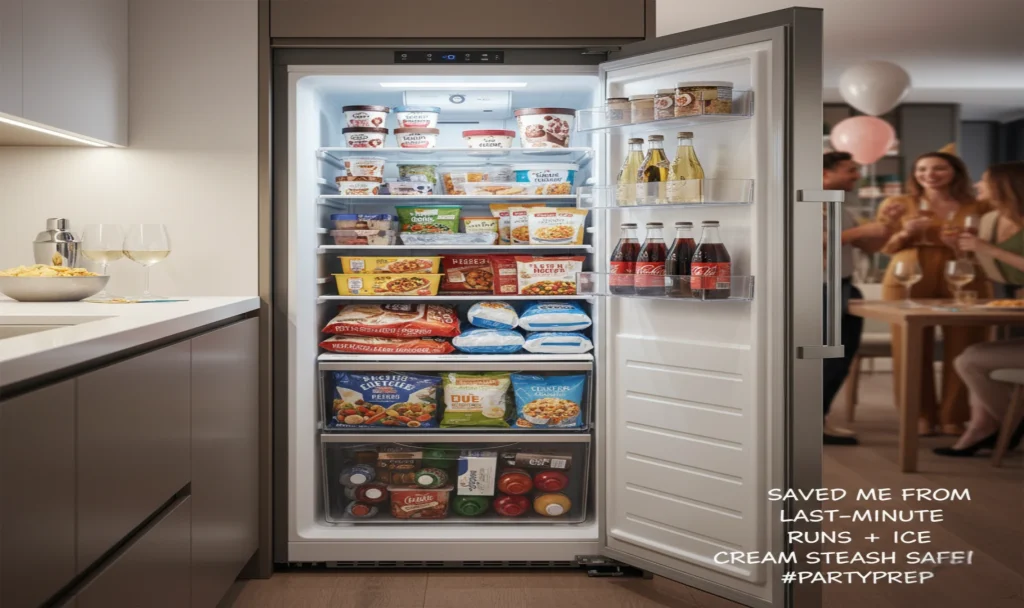
Easy Maintenance Tips
- Defrost every few months (if it’s not frost-free).
- Wipe the inside with mild soap and water.
- Keep it at least a few inches away from the wall for airflow.
- Don’t overload — it works best when air can circulate.
- If possible, check the door seal once a month to ensure it closes tightly.
FAQ
Q: Can I keep it in the garage?
Yes, but check the manufacturer’s temperature range first. Some models don’t like extreme heat or cold.
Q: How much does it cost to run?
Mine uses less power than a light bulb — roughly $3–5 a month, depending on your energy rate.
Q: Stand-up vs chest style — which is better?
Vertical units are easier for quick access. Chest models are cheaper per cubic foot but harder to organize.
Q: Can I put it on a countertop?
Yes, as long as it’s designed for countertop use and has enough clearance for ventilation.
Q: How long will it last?
With proper care, a small model can last 8–10 years easily.
Final Thoughts
After spending weeks testing several small upright models, the Whynter CUF-301SS still comes out on top for me. It strikes the perfect balance between compact size, quiet operation, and versatile storage options. I particularly appreciate the removable shelves and pull-out basket, which make organizing frozen items a breeze. The energy efficiency and low noise level mean I can keep it in my apartment or office without worrying about high electricity bills or constant humming.
If you’re looking for a more budget-friendly option, the Kismile is a solid choice. It offers adjustable temperature settings, quiet operation, and a sleek design that fits well in smaller spaces. Meanwhile, for shared offices or apartments, the hOmelabs model stands out as a reliable option. This is simple to use, durable, and flexible with its reversible door. Overall, investing in any of these small upright units will make life easier, save time, and help you keep your frozen items neatly organized.
